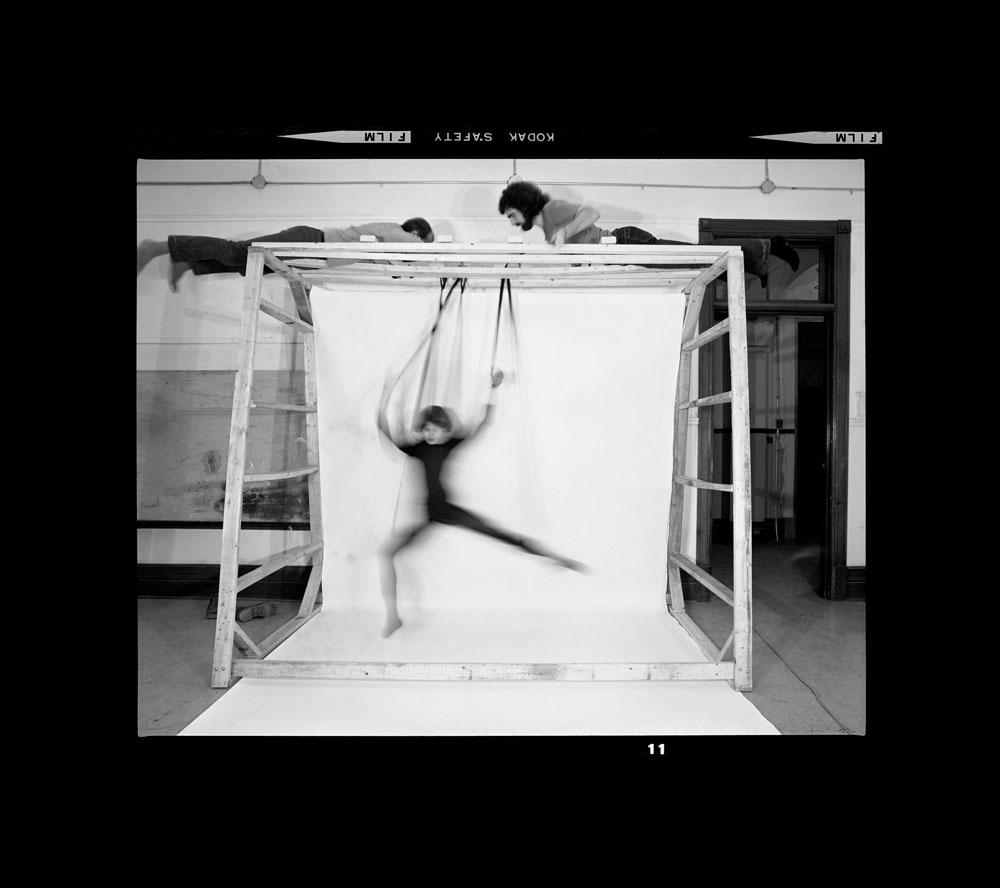It’s September, the most opportune time of the year to start getting schooled in Canadian art. And so an argument could be made for many in Halifax—the city’s large collegiate population most certainly included—to visit the MSVU Art Gallery and soak up some lessons on one of Canada’s most important photographers, Suzy Lake.
After all, Lake has been a contemporary of some fairly groundbreaking figures, working on themes of women, the body, performance and identity before her better-known acquaintance Cindy Sherman did. She has been included in important surveys of Canadian conceptual art like “Traffic” and international feminist art like “WACK!,” indicating that her practice merits a more in-depth individual look. And with this exhibition surveying (compactly) 40 years of production, it’s a great opportunity to see Lake’s themes traced from early work to the present day.
In 1976’s Choreographies on the Dotted Line, for instance—a rarely exhibited video by Lake, and a treat for fans—the artist slowly rolls herself out of a long, tightly wrapped piece of fabric bearing the titular dotted line. This work strongly appealed to me at the exhibition’s tour debut at the University of Toronto Art Centre; it evoked ideas of loosening societal (and, perhaps, artistic) constraints while indicating the artist’s own strength and endurance. The latter was not an uncommon aspect of video and performance art of the 1970s, and neither was the flavour of enjoyable absurdity involved in executing such actions of the era, but Lake’s performance stands strongly on its own some 35 years later.
In more recent works, such as Extended Breathing (2008–11), this sense of endurance has matured and grown. Lightboxes in this series show long exposures of the artist breathing in garden settings, sometimes for up to an hour, with her image becoming blurred in the process. It’s a wonderful point of departure—at once elegant and humble—for considering the way we might better appreciate the subtleties of life as we age; for reflecting on survival itself as a phenomenon worthy of tribute and examination; and for critiquing the ability of images to represent the grounding processes of life.
A similar evocation occurs in Lake’s Reduced Performing series (2008–11), which documents acts such as blinking, breathing and crying during minutes-long digital scans. Displayed vertically, these scans seem to also connect to Lake’s Beauty at the End of the Season series (2002–6), photographs of roses in her garden in the fall. The latter photographs challenge ideas of aesthetic perfection in a very different manner than Lake’s early On Stage stills (1972–5) did, but with no less poignance or intelligence.
Just as Lake has spent much of her career meditating on societal images and expectations of women at different stages of life, it is a privilege to see Lake’s works through some of these different stages—taken together, they suggest the documentation of a maturing process to which all of us are subject, but which few of us can articulate with such grace.









